
The look of these I-153s is characteristic:
- black-green camouflage of non uniform pattern, apparently semigloss;
- 4, 6 or 8 RS-82 rocket rails under the wings, often aside one bomb rack; the wings undersurfaces were protected against the fire of the rockets by the installation of thin metal plates; some planes were equipped with bomb racks;
- deletion of the landing gear doors to save weight;
- sometimes, deletion of the engine shutters plate and of the spinner;
- two-digit white numbers on the fuselage sides;
- red stars (probably of the plain type) on the fuselage sides and/or on the tail, and on lower wing surface.
24
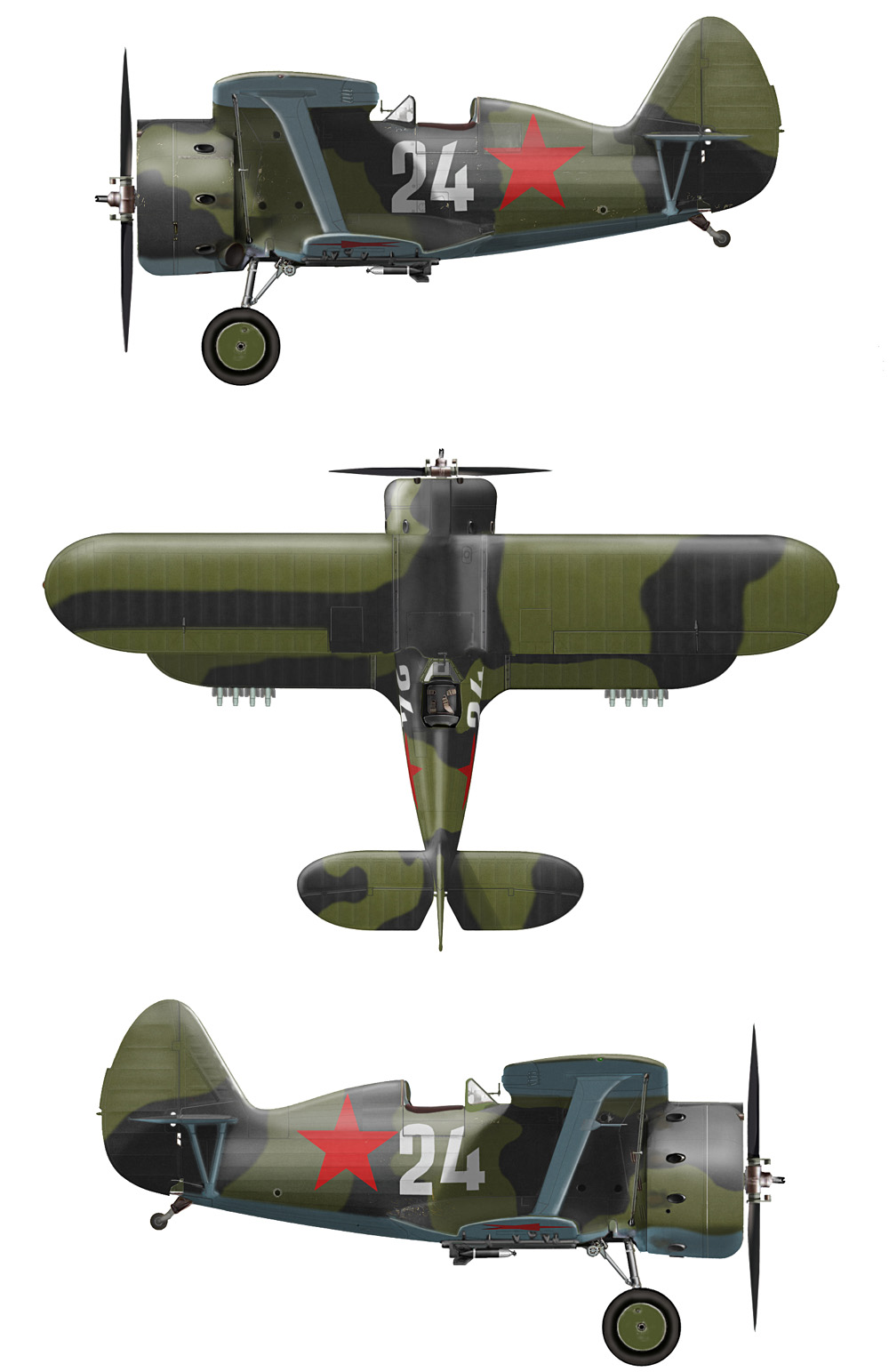
Drawing by Tapani Tuomanen
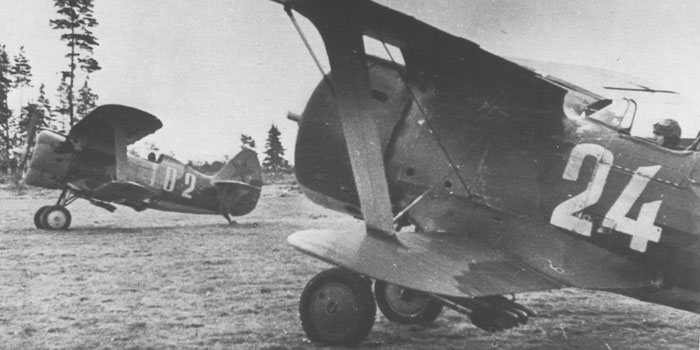
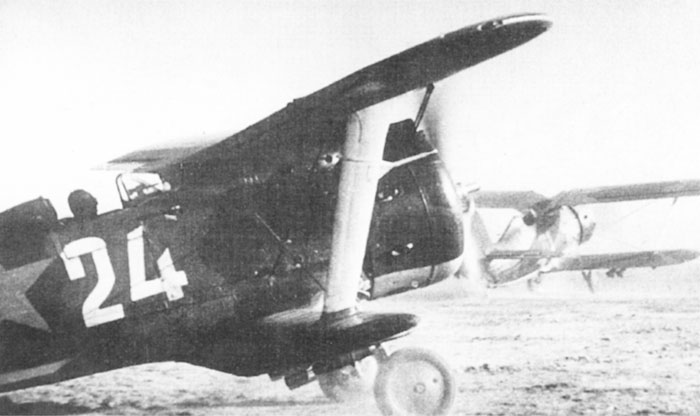
Plane 24 was flown by squadron leader Capt.K.V.Solovyov. He was awarded as Hero of the Soviiet Union on October 23,1942, having 5 aerial victories. He died in action on December 27, 1942.
(from Red Stars, Geust, Keskinen, Stenman, ed. Apali)
This plane appears armed with 8 RS-82 rockets, without bomb racks. The engine is supposed to be an M-62, the most common case.
The camouflage pattern is very different from the one suggested by the ministerial instructions of June 1941, and changes from plane to plane. Let's s try a reconstruction from the photos of White 24, the best photographically documented one.
The first photo shows a black blotch on the lower half of the cowling; a green band from the upper half of the cowling to the wingsoot; the subcessive black band covers the cockpit and extends un the rear part of the lower wing; there is a reflective triangle on the lower wing tip, perhaps a band made with gloss black reflecting the sky; a green band is visible under the star; the right upper wing root looks black; very few is visible of the right wing, but it seems to see a black band parallel to the leading edge, stopping before the tip.
A comparison with n.102 on the background shows that the latter one has a similar camouflage, but with green and black exchanged.
The second photo shows the other side of n.24 . The lower part of the cowling is green, extended up to the wingroot; a black band covers the upper part of the cowlig and bends downwards to the wingroot; it extends on the central part of the wing, parallel to the leading edge, and becomes wider on the wingtip; there are green bands on the front and rear edge of the wing; the cockpit area is green, and a black band extends in the rear fuselage, anding under the leg of the red star. The camo of the right side of the tail is unknown.
Interestingly, the left upper wing seems to have a wide black band on its rear half, parallel to the rear edge; the aileron appears green, perhaps due to a replacement.
Note that plane 61 on the background has longitudinal bands on the wings, as usual on other types, instead of trasversal as they seem on n.24.
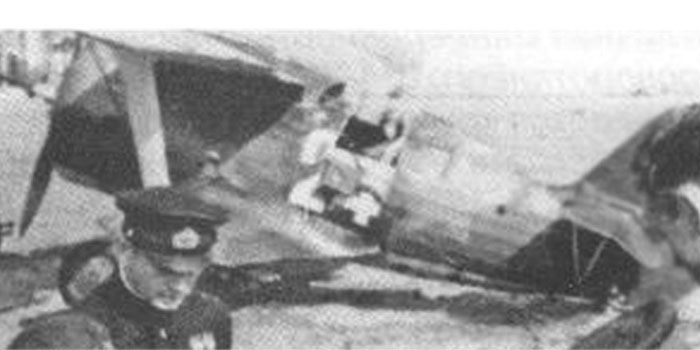
Although bad, this image shows part of the tail of n.24. We see an oblique black band starting at the base of the fin and extending downwards, while the upper part is green. Three black blotches can be seen on the stabilizer and elevator.
Unfortunately, the photo doesn't allow to say for sure if plane 24 had a red star on its tail, or not. Photos of other planes of the same unit sometimes show red stars on the tail, sometimes not.
61
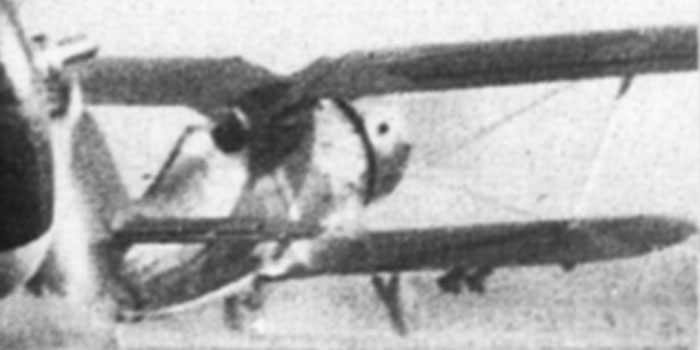
A detail of plane 61 appearing on the photo on the background of plane 24. This plane seems equipped with two rockets only under easch wing, plus bomb racks.
Interestingly, the dark band on the upper right wing is well visible, and has a longitudinal look. The band on the lower wing is confused because of a shadow and a reflection from the strut, but it looks oblique. The black band on the upper left wing looks to start on the wing joint and to extend trasversally as that of 24, but becoming thinner towards the tip.
A red star is vaguely visible on the fuselage.
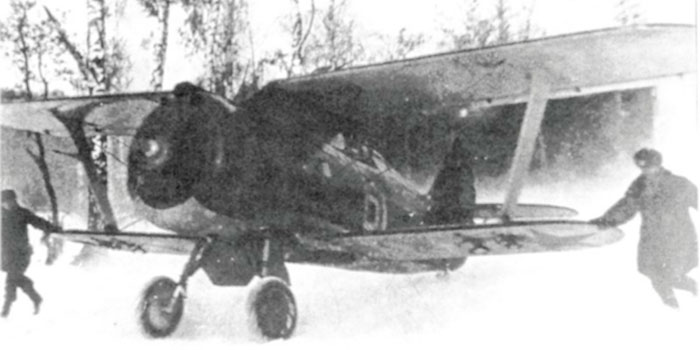
102
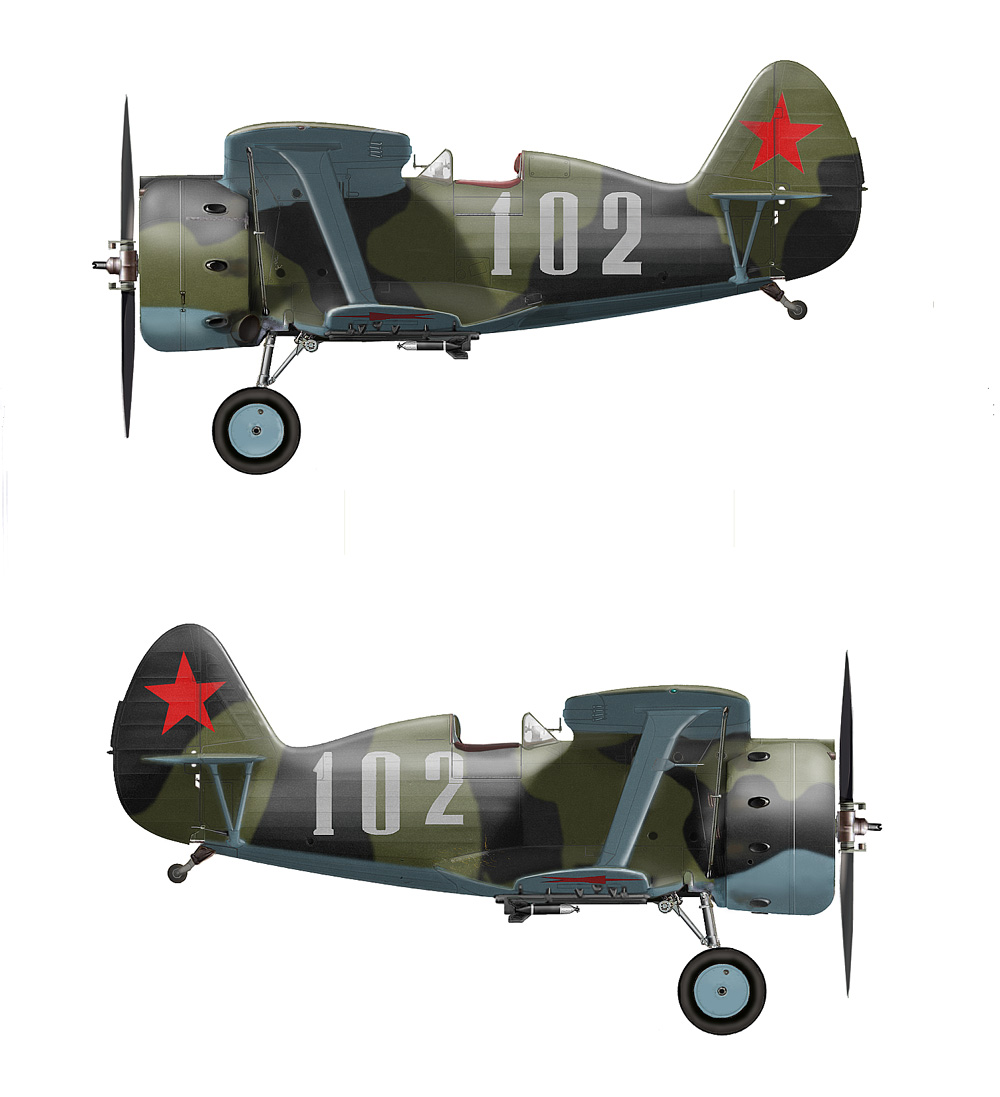
Drawing by Tapani Tuomanen


Plane n.102 was flown by Major P.I. Biskup.
The side exhaust close to the wingroot seem to identify it as M-62 engined, the most common case. It is armed with 8 RS-82 rockets. The front shutters plate looks removed to improve the cooling of the engine during the summer.
The camouflage pattern looks, more or less, a reversed version of the pattern of 24, with green and black exchanged.
Here the star is present on the tail only, while the rear fuselage is occupied by a wide 102 of uncertain color, apparently darker than the immaculate white of n.24. Yellow, dirty white, light blue or light grey are hypothizable for its painting.
Below: a winter image of 102, whose front plate, now installed is of late type, typical of M-63 engined planes. It seems that this plate became of general use on late-built I-153s, or perhaps it's simply from another plane.
The 2 of 102 looks much smaller than the other digits.
Unfortunately, none image shows the upper surfaces of the plane; one can guess that it could resemble to that of n.24 with inverted colors.
Another difference respect n.24 are the wheel disks, light blue instead of green.
(from Wydawnictwo Militaria n.222, Polikarpow I-153 of Maslov)
29 and 50
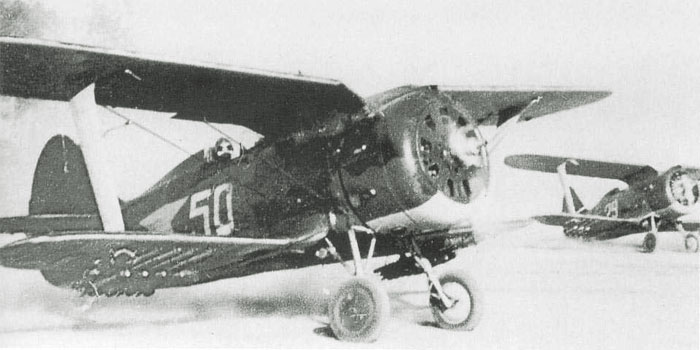
Plane white 50 was flown by Capt.A.G.Baturin,that was later awarded with the Golden Star, having a score of nine victories.
The plane has four rocket rails plus one bomb rack under each wing.
Plane n.29, on the background, has three rockets only and one bomb rack. Differently from n.50, it is without the shutters plate.
Plane n.29 is without the front shutters plate, leaving the engine visible.
Both planes have red stars on the fuselage sides, but not on the tail.
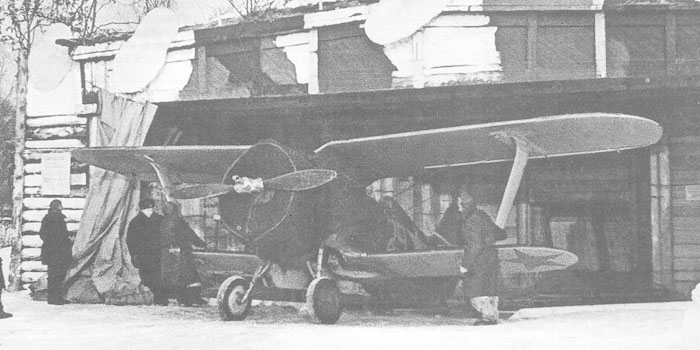
75
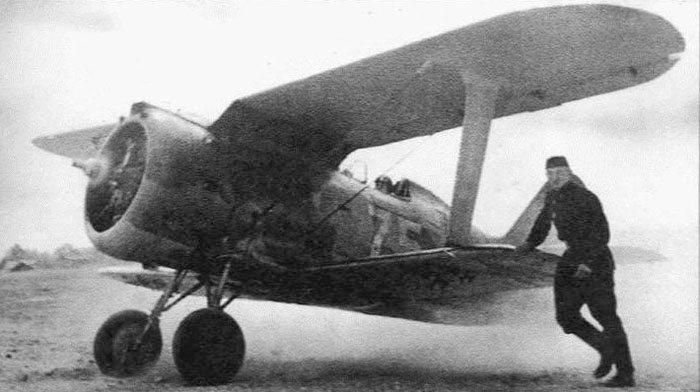

The large side outlet is typical of M-62 engined planes, even if the front plate is of late type. Unusually for this unit, the plane still has the spinner. A red star is visible on the tail, but the man hides the number painted on the fuselage side.
45

Plane n.45 is one of the few ones where one can see something of the camouflage pattern of the wings, that changes from plane to plane but has some common points. Black bands parallel to ailerons are also noticeable on plane 24, confirming that the observation on its photo is reliable. A black band parallel to the leading edge can be seen on the left upper wing. The lower right wing seems to have, instead, a longitudinal black band covering the wingstrut's base and an oblique one covering the part towards the fuselage. The left wingtip, barely visible over the left stabilizer, looks black. Something can be seen of the bands on the rear fuselage and tail too.
The use of bands parallel to the ailerons is extremely rare in VVS, but looks a common practise on this type (or perhaps on this unit). This could be also due to the hard accessibility of the upper wing, that can be reached by a ladder and makes hardly reachable for a brush the parts far from the edges. Stabilizers and rudders, easily accessible, look to have smaller bands and a more complex pattern with black bands/blotches starting from the edges.
93


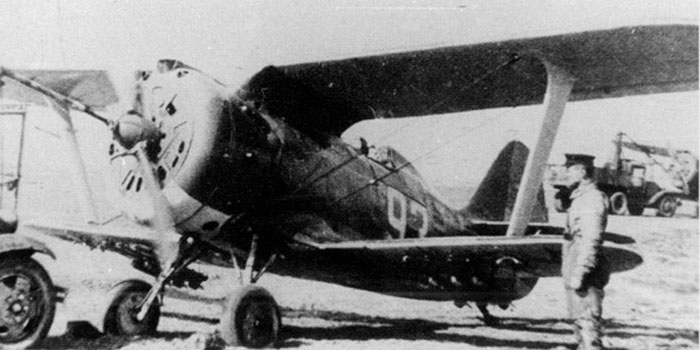
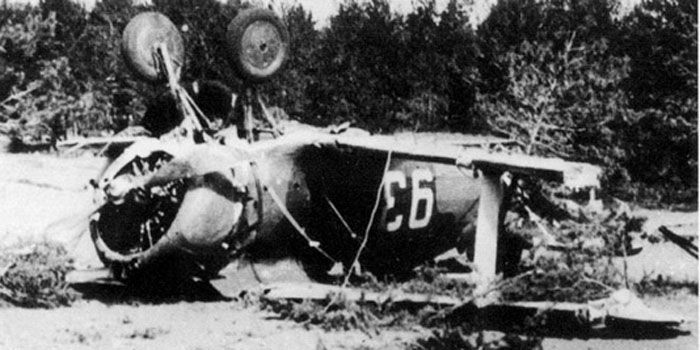
Top: profile of plane 93.
Left:
Three images of I-153 white 93 of the 71 IAP VVS KBF in August 1942.
The first and second photos show three rocket RS-82 plus one bomb rack under each wing. The plane features the spinner and the shutters plate unremoved.
It's not clear if the third image is of the same plane: the crashed one lacks of the spinner, of the engine shutter and of the underwing rocket rails; besides the inner face of the wheel disk looks green instead of light blue.
On the other hand, the profile of the black band under the bort number is surprisingly similar to that of the first photo, but the star isn't visible, perhaps for a joke of the film.
It could be the same plane after having lightened of all what was possible.